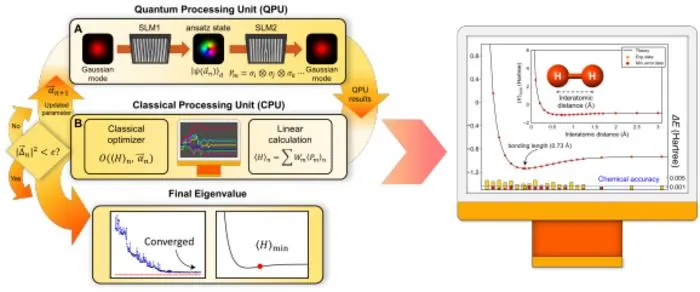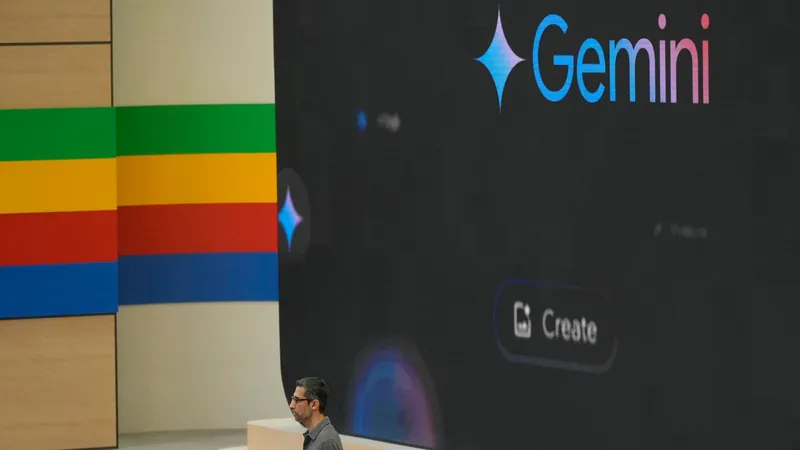
Groundbreaking Quantum Computing Breakthrough: Korean Researchers Harness Single Photon Qudits for Chemical Accuracy!
2024-11-22
Author: Emily
Introduction
In an exciting advancement for quantum computing, researchers at the Korea Institute of Science and Technology (KIST) have successfully developed an innovative qudit-based quantum computing algorithm that achieves remarkable chemical accuracy when estimating interatomic bond distances and ground-state energies—all without the cumbersome need for additional error mitigation techniques.
Traditional vs. Innovative Approach
Traditionally, quantum computing has utilized qubits, the basic units of quantum information. However, this pioneering team has taken a bold leap by employing high-dimensional qudits, allowing for far more efficient and accurate computations. This groundbreaking approach not only enhances computational capabilities but also significantly reduces the likelihood of errors.
Implementation of the Algorithm
The team implemented a Variational Quantum Eigensolver (VQE) within a complex 16-dimensional photonic system, marking a milestone for practical qudit-based quantum computations. The implications of their work extend far beyond the lab, heralding potential applications in crucial industries including drug development, battery technology enhancement, and even tackling multifaceted challenges like climate modeling.
Innovative Qudit Creation
The centerpiece of this research lies in the innovative implementation of a qudit, created using the orbital angular momentum state of a single photon. By cleverly manipulating the phase of the photon through holographic imaging, the researchers managed to execute high-dimensional calculations without the need for complex quantum gates, thus minimizing errors in the process.
Quantum Chemistry Calculations
This pioneering study allowed the team to perform quantum chemistry calculations at unprecedented dimensions—estimating bond lengths in hydrogen molecules in four-dimensional space and in lithium hydride (LiH) molecules within a staggering 16-dimensional framework. Notably, while conventional VQE methodologies from leading tech giants like IBM and Google require extensive error mitigation for achieving chemical accuracy, KIST’s approach accomplished this feat seamlessly without any added techniques—revolutionizing how quantum computation can be realized in practical scenarios.
Researcher Insights
"This study exemplifies the vast potential of qudit-based quantum computing technology. The ability to achieve chemical accuracy with reduced resources can vastly enhance sectors where understanding molecular properties is crucial, paving the way for breakthroughs in drug development and energy solutions,” stated Dr. Hyang-Tag Lim, the leading researcher at KIST.
Future Implications
As excitement around quantum computing continues to grow, this breakthrough reinforces the notion that we are on the brink of a new era in computational science. With phenomena like interatomic interactions accurately modeled using just a single photon, the future of quantum technology indeed looks promising, offering endless possibilities for innovation across various fields. Could this be the key to solving some of the world’s greatest scientific challenges? Only time will tell!









 Brasil (PT)
Brasil (PT)
 Canada (EN)
Canada (EN)
 Chile (ES)
Chile (ES)
 España (ES)
España (ES)
 France (FR)
France (FR)
 Hong Kong (EN)
Hong Kong (EN)
 Italia (IT)
Italia (IT)
 日本 (JA)
日本 (JA)
 Magyarország (HU)
Magyarország (HU)
 Norge (NO)
Norge (NO)
 Polska (PL)
Polska (PL)
 Schweiz (DE)
Schweiz (DE)
 Singapore (EN)
Singapore (EN)
 Sverige (SV)
Sverige (SV)
 Suomi (FI)
Suomi (FI)
 Türkiye (TR)
Türkiye (TR)